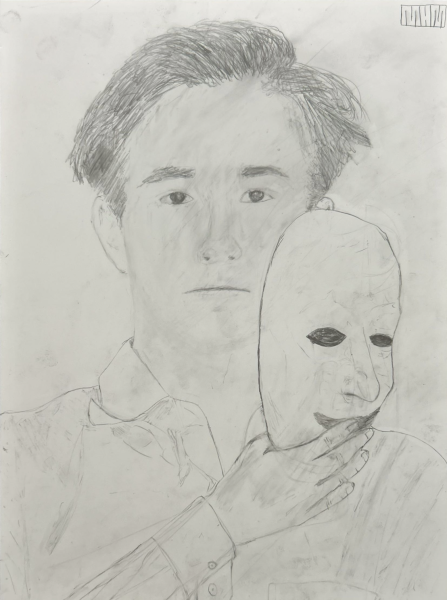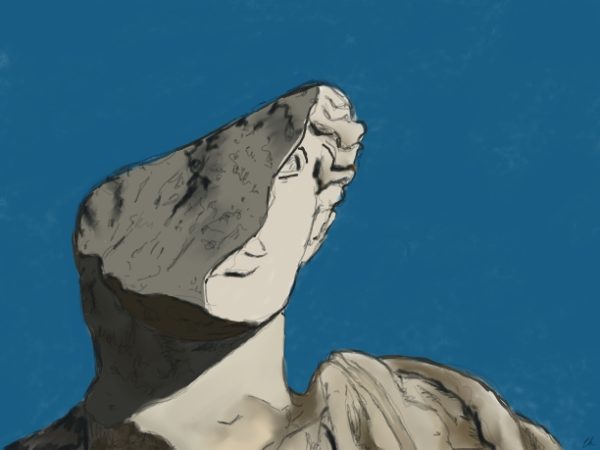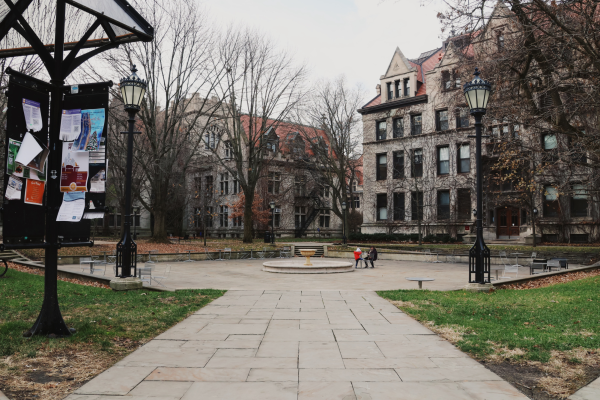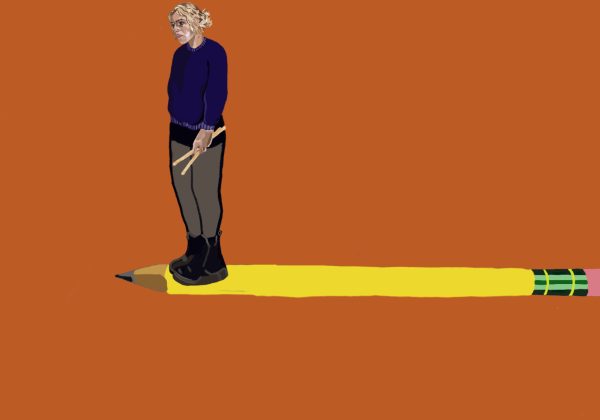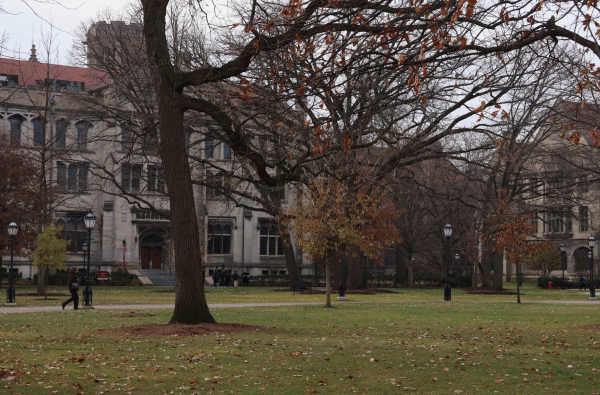Oh My, Can We Still Talk About “The OI”?
Navigating names, repatriation, and the legacy of the past.
June 15, 2023
Rarely did anyone on the University of Chicago campus call the former Oriental Institute by its actual name. We casually referred to it—and some of us still do—by the old abbreviation, the OI. Perhaps the majority of that was simply for ease: students here do love their short forms (“the Reg”, “Ex-Lib”, “Max P” and “Hutch”). However, as an international exchange student still learning about the “hip” or socially appropriate ways of address, I was confused when my peers brought up the two-letter name more than once in class. Upon discovering that it’s short for “the Oriental Institute,” my first thought was “Isn’t that a little outdated, a tad offensive, and surprisingly a whole lot reductive of the museum especially considering the overall political progressiveness of the University?” As an Egyptian from the “Middle East,” a Eurocentric designation that can also be divisive in its own right, I did not understand how the Institute’s name had survived for as long as it did. Was the abbreviation, then, not a matter of ease, but of shame?
You can imagine my relief when the OI finally announced its new name earlier this quarter: the Institute for the Study of Ancient Cultures, West Asia & North Africa (ISAC). Despite the Sidechat jokes about the new lotus flower logo (which I love because of its significant relation to Egyptian culture), the name fits the true objective of the Institute in this time and age. It also does not fall into the identity discourse, in which the power of names and words can cause substantial harm and can often overshadow any potential good intentions. That is exactly what the old name did. While we should not dwell on the past, it’s important to revisit why the name needed to be addressed in the first place.
To understand why the name is a problem, we must understand the word “Orient” and its continuing legacy, regardless of intentions. The Oriental Institute was founded in 1891 by American archaeologist James Henry Breasted. Despite what Interim ISAC Director Theo van den Hout wrote for the new name launch, the name “Oriental” was never just “a purely geographical term.” Perhaps its use as a term of geography has changed, as ISAC Manager of Adult Education Tasha Vorderstrasse explained, but the term’s connotations never did. At the time of the OI’s inception, traditional empires were still at large. The majority of the world was still suffering the physical pangs of territorial colonialism, including Egypt. However, the marks of empire are rarely just the tangible ones but include psychological and even ontological implications. In many instances, Europe had to justify its horrific acts by othering the people they conquered, creating a dialectical relationship that favored its imperial pursuits. Europeans were noble, knowledgeable, and enlightened while the rest of the world—suddenly made a homogenous entity—was savage, uncivilized and backward. Most of all, the other became exotic. As Edward Said would come to show, it was necessary to present the “occidental” culture as superior to that of the “orient.” In making the non-Europeans inferior, a manifestation of a bunch of caricatures and negative stereotypes, they were not only conquerable, but also left their history up for grabs. This relationship was one of moral and cultural dominance, not just political. Given how difficult it would have been to erase or ignore the antiquities of the colonized, it was easier and more beneficial to claim any ancient civilization and its physical heritage as that of the West or more broadly of humanity. Our exclusion from this appropriation of the past’s treasures is clear, and it brings up the following question: were we, the colonized peoples of the “East,” even a part of this shared history of humanity?
The colonial hierarchical relationship was also racialized, at least in early 20th century Egypt, with lighter skin functioning as an indicator of both modernity and Westernization, particularly for women. This distinction alienated the majority of modern-day Egypt’s residents, who are incredibly and fabulously diverse in terms of physical appearance, from the equally diverse ancients who created those first foundational civilizations. How could they be if they look and act the way they do now? (Quite ironic given how attached ancient Egyptians were to land and agriculture, and how male figures were depicted using reddish-brown color to reflect the time spent outdoors in the fields under the sun while women were painted a pale yellow.) Instead, the ownership of ancient Egyptians’ accomplishments was given to Europeans. Even when local Egyptian workmen participated in new discoveries, press coverage at the time excluded them from the records. The West were better equipped to find and keep treasures safe, especially from us—Egyptians whom American archaeologist George A. Reisner called “a half-savage race.” We were blamed for thefts of artifacts, despite the fact that such artifacts magically found themselves in Britain, France, and Germany, sold and bought by wealthier Europeans or even soldiers for their “private collections.” If tombs were robbed, it was because there was a prosperous growing market for artifacts, and it was the constant threat of destitution that motivated robberies—conditions brought about by colonial rule.
I visited the museum myself on a rainy Friday. To be honest, I was bedazzled by the cultures displayed. I was shocked at the vastness of the collections, the scale of them: the archaeological finds and the replicated models ranged across the old world, from ancient Mesopotamia, Egypt, Nubia, Syria, Iraq, Lebanon, Persia/Iran, and even Greece. My American peers often referred to the OI (now, ISAC) with a casualness that made the museum seem as if it were not that big of a deal. It is. The museum might as well have been one in Egypt, or maybe Iran, considering the giant Persian walls and slabs gracing the ISAC halls. As part of the Egyptian public, someone not versed in archaeology and Egyptology but nevertheless proud of the heritage I grew up around, I ought to have known about the curated pieces of pharaonic Egypt, Roman Egypt (ISAC hosts one of the famous Faiyum portraits), and even Islamic Egypt.
The astonishment with the ISAC collections did not last for long. An exasperation replaced the feeling as I read the information under each piece. In the Egyptian section, artifacts came from three sources. A large portion were excavated by the Egypt Exploration Fund (EEF), a British non-profit founded “in order to explore, survey, and excavate in Egypt” that now bears the name Egypt Exploration Society (EES), and were given to the University of Chicago for its contributions to the fund.
While the presence of these artifacts in the ISAC is entirely legal, it is still rooted in colonialism. In 1882, the British Empire had violently added Egypt to its list of colonies or “veiled protectorates.” As a result, although the removal of antiquities was technically banned in Egypt in 1835, the British and French empires were exempted through what they called a system of “partage,” meaning “to share.” This system, established under the French Head of the Egyptian Antiquities Service, Gaston Maspero, and English archaeologist Flinders Petrie in 1883, allowed archaeological projects in Egypt to be sponsored by museums and educational organizations such as EEF and the University of Chicago. In return for their support amid the lack of government funding, these sponsors were guaranteed a piece of the pie. Although Cairo was given precedence in choosing the objects that were to remain, extensive amounts of artifacts were transported from the country and to Europe and the United States. It was not until 1983, when independent and sovereign Egypt introduced its own comprehensive antiquities protection law, that this “partage” was stopped. In efforts of good faith, Egyptian authorities separate objects exported abroad through partage agreements from “stolen” or illicitly trafficked artifacts. This act is both an acknowledgement of those institutions tremendous efforts in unveiling and preserving Egyptian heritage and an assertion of the continued hold of Western intellectual tradition on Egyptology and archaeology in Egypt.
Just as my fellow Egyptians are petitioning and trying to bring back Nefertiti’s bust from Germany, the Dendera Zodiac from France, and the Rosetta Stone from the British Museum, there is nothing I would love more than to call for the repatriation of the partage objects. Yet, for the moment, I won’t. They were, after all, “legally” obtained and ultimately cared for by museums like the ISAC, and I know they’re no less part of my heritage by virtue of that custody. In fact, I had briefly rejoiced in their presence as someone who has frequently visited the museums in Cairo and traveled to see the glorious temples in Luxor and Aswan (the most beautiful archaeological and Nile sites you will ever find). In a sense, a part of my home is with me here, at UChicago.
Aside from the name change request (now answered), what I do call for now is an acknowledgement by the ISAC of the colonial history involved in the extractions they helped fund. Nowhere in the museum was there any information about the EEF or any excavations they underwent. I was not given any pamphlets as I entered, nor was there anything written underneath the curated pieces about this process. I had to go through their website to find most of the information I have here. But still, I could not find any reference to European colonialism or how the artifacts were a part of the legacy of colonial rule. (I did find a search result for a lecture on Egypt’s occupation by Nubia, though.) The least the ISAC could do is provide information on the partage system that allows it to keep these objects. Is mentioning the horrific, exclusionary history of how these artifacts came to be in the museum not worthwhile? Would it be also too much to ask for a small line about the Egyptians, who helped in those excavations but were never given proper due?
I would also call for ISAC to publicly identify the sources of the other artifacts or make an effort to try to locate them. The second portion of the Egyptian collection was purchased by the Institute’s founder in various cities around the globe, but from whom is unclear. Others were “gifted”, and the identities of the generous entities or persons bestowing a gift that might not be theirs remain unknown. The vagueness of the origin of those items irks me: If the origin is shaky, does this establish grounds for calls for repatriation? From my side, yes. The very least would be an acknowledgement and perhaps an agreement of loan, rather than the objects remaining objects infinitely at the ISAC. What about taking the artifacts to Egypt for periodical visits in a form of exchange? The Institute has seemed more than willing to accommodate the demands of countries demanding repatriation: In 2019, around 1,800 artifacts were returned by the OI to Iran following Iranian demands. Not a far cry then.
The point of this article is not an attack on or a commendation of the Institute. For me, changing the name “Oriental” is neither an act of “political correctness” nor is it an act of total exoneration. Rather it is a showcase of solidarity to the people who suffered under the guise of exploration. It is a commencing attempt, one pointing out the need for change. Therefore, I stress that I do not demand an upheaval, simply a consistent effort to right some of the wrongs of the past. Changing a name that has emphasized untrue cultural differences rather than geographical ones—like the term WANA (West Asia North Africa)—does not erase what has been done but it gives hope that our views matter more now. Shedding light on the actions of the past strengthens the ISAC, rather than weakening it.
Salma Tageldin is a Student-at-Large in the College.




